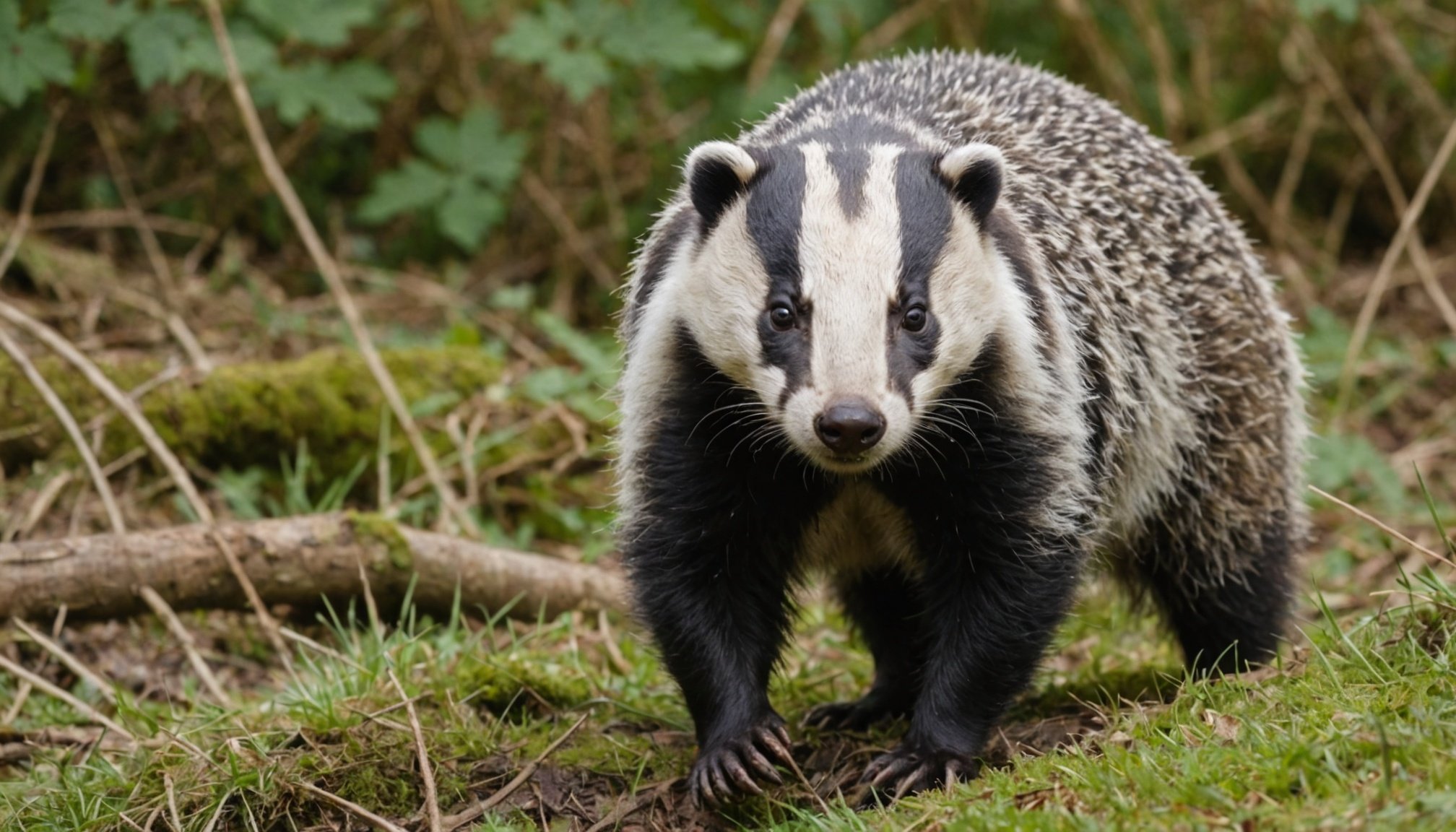The UK's badger cull remains a contentious topic, sparking intense debate among conservationists, farmers, and policymakers. Supporters argue it helps control bovine tuberculosis, while critics question its ethical implications and ecological impact. This comprehensive analysis delves into both sides, exploring scientific research and real-world consequences. By examining these perspectives, we aim to provide clarity on whether the cull is an effective solution or a misguided approach to wildlife management. Understanding these nuances is vital for making informed decisions about animal welfare and public health.
Overview of the UK's Badger Cull
Exploring the historical and current landscape of wildlife management in the UK
Sujet a lire : Exploring the Impact of New UK Hunting Regulations on the Safety of Foxes and Hares
Historical Context of Badger Culling
The badger cull in the UK has deep historical roots, tracing back to efforts aimed at controlling bovine tuberculosis (bTB). Originally, culling was seen as a necessary step to protect livestock and maintain agricultural productivity. Over the decades, the practice has been met with varying levels of public support and opposition, reflecting changing attitudes towards wildlife management and conservation.
Current Policies and Regulations
Today, the UK wildlife management policies surrounding the badger cull are governed by stringent regulations. These policies are designed to balance ecological concerns with agricultural needs. The government implements culling under strict licensing, ensuring that it is carried out humanely and effectively. The aim is to reduce the spread of bTB while considering the impact on biodiversity.
A découvrir également : Exploring the Effects of New UK Wind Farms on Local Bat Populations: A Closer Look
Reasons for Implementing the Badger Cull
The decision to continue the badger cull is primarily driven by the need to control bTB, which poses significant economic challenges to the farming industry. Advocates argue that culling is a necessary tool in the broader strategy of disease management. However, it remains a contentious issue, with critics emphasizing the potential negative effects on biodiversity and animal welfare.
- Badger Cull: A wildlife management practice
- Biodiversity: Impact on ecosystems
- UK Wildlife Management: Balancing agricultural and ecological needs
Ecological Impacts of the Badger Cull
Understanding the broader environmental implications
Effects on Local Ecosystems
The ecological consequences of the badger cull extend beyond immediate impacts on badger populations. Badgers play a crucial role in their ecosystems, influencing soil health and biodiversity. Reducing their numbers can lead to overpopulation of certain prey species, potentially disrupting local food chains. This imbalance might affect other wildlife, leading to unforeseen changes in ecosystem dynamics.
Badgers and bTB Spread
The relationship between badgers and bovine tuberculosis (bTB) is complex. While badgers are carriers of bTB, the disease management strategy of culling is debated. Critics argue that culling disrupts badger social structures, potentially increasing disease spread as displaced animals move to new areas. This raises questions about the effectiveness of culling as a long-term solution.
Long-term Ecological Consequences
The wildlife impact of reduced badger populations may have lasting effects. Long-term ecological consequences include potential declines in biodiversity and changes in habitat structures. The role of badgers as ecosystem engineers highlights the need for careful consideration of their removal. Balancing disease management with ecological preservation remains a significant challenge.
- Ecological Consequences: Impact on ecosystems
- Wildlife Impact: Changes in biodiversity
- Disease Management: Balancing control and conservation
Understanding these factors is crucial for informed decision-making in wildlife management policies.
Ethical Considerations
Examining the moral landscape of wildlife management decisions
Perspectives on Animal Rights and Welfare
The ethical dilemmas surrounding the badger cull are deeply tied to concerns about animal welfare. Many argue that culling badgers infringes on their rights, raising questions about the moral justification of such practices. Proponents of animal rights emphasize the intrinsic value of all wildlife, advocating for non-lethal alternatives to manage bovine tuberculosis (bTB).
Public Opinion and Activism
Public sentiment plays a crucial role in shaping the discourse on the badger cull. Activists and animal welfare organizations have been vocal in their opposition, organizing campaigns and protests to highlight the ethical implications of culling. Their efforts underscore a growing societal shift towards prioritizing animal welfare over agricultural interests.
Ethical Implications of Wildlife Management Practices
The ethical dilemmas extend to broader wildlife management strategies. Balancing disease control with conservation requires careful consideration of both ecological and moral factors. As public sentiment increasingly leans towards conservation, policymakers face pressure to align practices with evolving ethical standards.
- Animal Welfare: Central to ethical debates
- Ethical Dilemmas: Challenges in wildlife management
- Public Sentiment: Influences policy decisions
Understanding these ethical considerations is essential for developing responsible and humane wildlife management policies that respect both ecological and societal values.
Economic Factors
Analyzing the financial dynamics of wildlife management
Financial Costs Associated with the Badger Cull
The financial burden of the badger cull is a significant consideration in wildlife management. Implementing culls involves substantial expenditures, from planning and execution to monitoring and evaluation. These costs are borne by government agencies and, indirectly, by taxpayers. Evaluating the cost-effectiveness of culling versus alternative methods is crucial for informed policy-making.
Economic Implications for Farmers and the Agricultural Industry
Agricultural impact is at the heart of the badger cull debate. Farmers face considerable economic challenges due to bovine tuberculosis (bTB), which threatens livestock health and productivity. Culling is seen as a strategy to mitigate these risks. However, the long-term economic implications of culling, including potential effects on biodiversity, must be weighed against its immediate benefits.
Evaluating Cost-Effectiveness of Culling Versus Alternatives
To assess the cost-benefit of culling, a comprehensive analysis is necessary. This includes comparing the financial outlay of culling with the potential savings from reduced bTB transmission. Alternatives such as vaccination or improved biosecurity measures may offer cost-effective solutions. A balanced approach, considering both economic and ecological factors, is essential for sustainable wildlife management.
- Financial Burden: Costs of implementation
- Agricultural Impact: Challenges for farmers
- Cost-Effectiveness: Comparing culling and alternatives
Case Studies and Expert Opinions
Exploring evidence and perspectives on the badger cull
Review of Notable Case Studies
Case studies provide valuable insights into the effectiveness of the badger cull. A prominent study conducted in Gloucestershire highlighted mixed results, showing a reduction in bovine tuberculosis (bTB) cases in some areas, while others saw little change. Another case study in Somerset revealed similar findings, emphasizing the variability in outcomes.
Insights from Wildlife Biologists and Veterinarians
Wildlife biologists and veterinarians have contributed significantly to the discourse on the badger cull. Dr. Sarah Perkins, a leading biologist, argues that culling may disrupt badger social structures, potentially aggravating disease spread. Veterinarian Dr. James Taylor supports this view, suggesting that alternative methods like vaccination could be more sustainable.
Summary of Research Findings
Research findings on the cull's effectiveness are diverse. A comprehensive review by the University of Exeter concluded that while culling can reduce bTB in certain contexts, its long-term benefits remain uncertain. The study advocates for a balanced approach, combining culling with other strategies.
- Case Studies: Mixed results from Gloucestershire and Somerset
- Expert Analysis: Biologists and veterinarians emphasize alternative methods
- Research Findings: Uncertainty in long-term benefits
These insights underscore the complexity of the badger cull, emphasizing the need for informed and adaptable wildlife management policies.
Alternatives to Badger Culling
Exploring sustainable solutions in wildlife management
Vaccination Strategies for Badgers
Vaccination presents a promising alternative to culling in managing bovine tuberculosis (bTB) among badgers. This approach involves administering vaccines to wild badger populations to enhance their immunity against bTB. Studies indicate that vaccination could reduce disease transmission, offering a more humane and sustainable method of wildlife management. Implementing vaccination programs requires strategic planning and resource allocation, but the potential benefits for both badger welfare and agricultural interests are substantial.
Habitat Management and Preventative Measures
Habitat management is another critical component of sustainable wildlife management. By improving the natural environment and reducing stressors, badger populations can be maintained in a healthier state, potentially lowering bTB transmission. Preventative measures, such as enhancing biosecurity on farms and creating buffer zones, can further mitigate disease spread without resorting to culling. These strategies emphasize coexistence and ecological balance.
Benefits of Sustainable Practices
Adopting sustainable wildlife management practices offers numerous advantages. These include preserving biodiversity, reducing economic costs associated with culling, and aligning with ethical standards. Sustainable approaches foster a harmonious relationship between agricultural needs and ecological preservation, ensuring long-term benefits for both wildlife and human communities.
- Vaccination: Humane alternative
- Habitat Management: Reduces stressors
- Sustainable Practices: Long-term benefits
These alternatives highlight the potential for innovative solutions in wildlife management.














